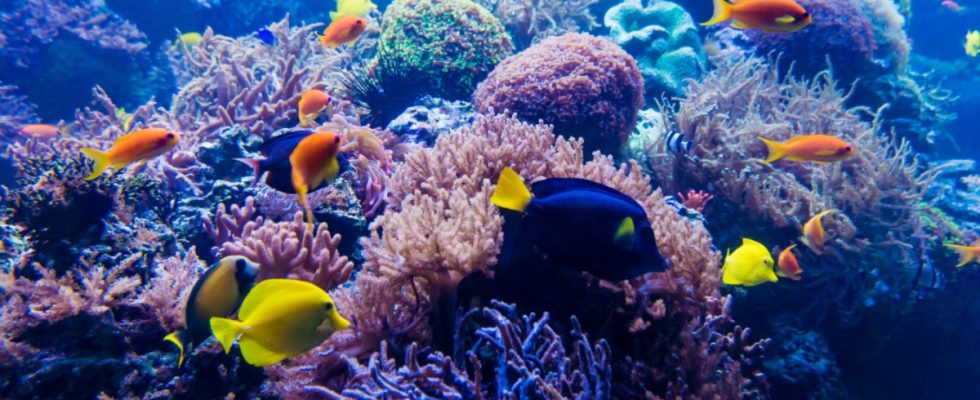Sea temperatures have been unusually high in many regions of the world for months. The situation in the Gulf of Mexico is particularly dramatic: the water temperature on the surface there is well over 30 degrees Celsius. Marine biologists therefore fear major coral bleaching in the Gulf of Mexico, but also in other ocean regions.
“The current extreme situation will most likely lead to mass bleaching with subsequent mortality,” says Christian Wild, who deals with marine ecology at the University of Bremen, the Science Media Center (SMC). “I expect this bleach to be even more extreme than the 2005 Caribbean bleach.” At that time, 80 percent of the corals in the tropical Atlantic bleached out. Half of them died.
“There has never been a comparable situation in the past,” says Sebastian Heel from the Leibniz Center for Tropical Marine Research in Bremen. He estimates there is a 90 percent probability of massive coral reef bleaching in the Gulf of Mexico. He also sees coral reefs in other regions under threat: “Large parts of the Caribbean, the tropical eastern Pacific and the Red Sea are also acutely threatened by heat-induced coral bleaching,” he says.
Unlike fish, corals cannot avoid the heat
Heels sees a “perfect storm” approaching the coral reefs, a development in which several different factors come together, each of which alone would lead to an increase in water temperature. In addition to the rise in sea temperatures, which is still a mystery to many scientists, an El Niño phenomenon is currently building up. In addition, the eruption of an underwater volcano in Tonga last year contributed to the warming of sea water.
Corals are among the creatures most sensitive to increases in water temperature. Unlike fish, for example, they cannot avoid the heat by migrating to cooler regions. Corals live in symbiosis with microalgae that carry out photosynthesis and provide the coral with nutrients. At high water temperatures, the microalgae lose their ability to photosynthesize. The corals respond by shedding their useless lodgers – the coral bleaches. If the water cools down again within a few weeks, the lodgers may move back in and the corals will survive – otherwise they will die. In the Gulf of Mexico in particular, however, the water temperatures are currently so high that rapid cooling is not to be expected.
“The only help would be weather phenomena like hurricanes, which lead to more mixing and turbidity,” Simon Brandl from the Department of Marine Science at the University of Texas tells the SMC. “By doing so, they would both cool the hot surface water that produces coral bleaching and bring nutrients to the corals to delay starvation during bleaching.” However, such storms could also have devastating consequences for people and further destroy reefs. “So that’s not necessarily something we should wish for.”
Most experts agree that the only chance of saving at least some coral reefs over the next few decades is to get the climate crisis under control. Then there is a chance that at least some species that have a higher resistance to heat stress will survive. The reefs that form these corals will not look “like the reefs pictured in the travel advertisements,” Brandl says. But they could at least maintain “a basic framework of the ecological functions” that make coral reefs one of the most valuable ecosystems on earth.

